
“The Last Samurai” was directed by Edward Zwick, best known for “Shakespeare in Love” (he was a producer of the film and won an Oscar for it). “The Last Samurai” was released on November 22, 2003.
Later, Zwick would work with Tom Cruise on “Jack Reacher: Never Go Back”. In the United States, the film grossed $111 million, but it brought at least $50 million to the economy of the area where “The Last Samurai” was filmed (New Zealand, Taranaki). The reason was that it provided jobs and an influx of tourists wanting to see the shooting location.
The film plot revolves around Nathan Algren, a man with extensive combat experience who is offered to train soldiers for the imperial army. In 1876, these were ordinary peasants who were sent into battle even though Nathan proved that they were not yet ready for this. Insurgent Katsumoto destroys the emperor’s army and captures Algren himself whom Katsumoto saw in his visions.
In captivity, the American learns Japanese, the art of swordsmanship and falls in love with Taka, the local woman. They are friends with Katsumoto. He unwittingly actively participates in historical Japanese events and eventually gives up the idea of returning to the US, staying with his beloved.

In addition to the title star, Tom Cruise, the film “The Last Samurai” featured such prominent figures as Ken Watanabe and Hiroyuki Sanada. The soundtrack was composed by Hans Zimmer; it was the 100th film in his career. But for Ken Watanabe, who would later play in Nolan’s “Inception” and “Godzilla”, it was not only the first US film but also the first film where he spoke in English.
It is of interest to note that Hiroyuki Sanada (“The Wolverine”, “Sunshine”, “Mortal Kombat”) had an experience that almost cost the performer the main role in life. In the episode when Nathan Algren rides a horse and dodges Ujio’s katana, the equipment suddenly failed and the mechanical platform that served as a horse did not move down but stayed put. If Sanada had not stopped the blade an inch from Cruise’s neck, the actor’s modern fans would never see either “Top Gun” or new impossible missions.

The film was nominated for the Oscar Award four times, the Saturn Award five times, the Satellite Award four times and the Golden Globe Award three times, apart from the less prominent awards in the movie-making industry.
See also
-
Tatara Samurai

One day, bandits raid the quiet Tatara village, renowned for its steelworks and sword craftsmanship. Despite the arrival of samurai to protect the villagers, young Gosuke's mother is tragically killed while fleeing with him.
-
Samurai Fiction
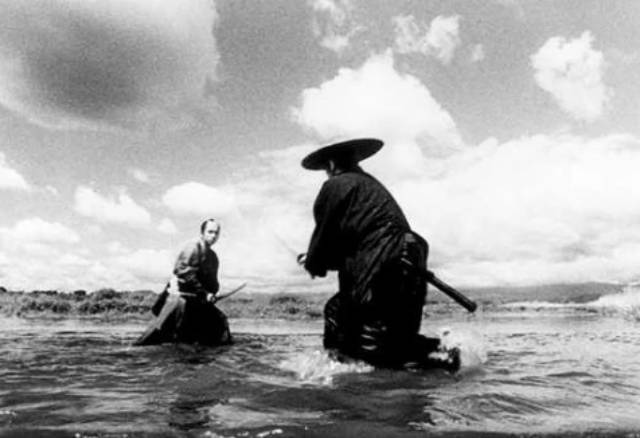
Samurai Fiction is a 1998 samurai-comedy film directed by Hiroyuki Nakano. The movie stands out for being filmed almost entirely in black-and-white, paying homage to classic jidaigeki samurai films. However, what sets it apart from its inspirations, including the works of Akira Kurosawa, is its modern twist, notably Tomoyasu Hotei's rock-and-roll soundtrack. A loose spinoff, Red Shadow, was released in 2001.
-
Rurouni Kenshin
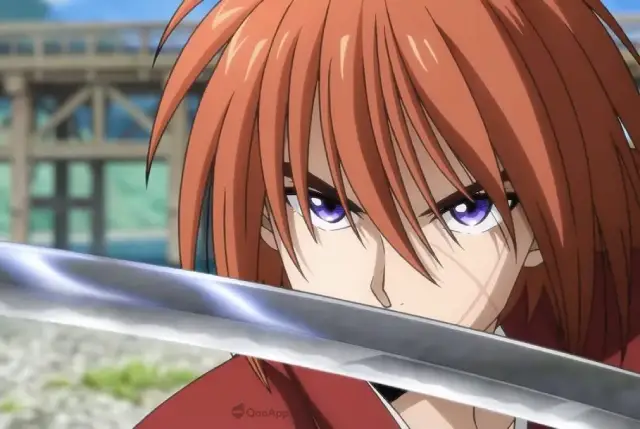
Rurouni Kenshin: Meiji Swordsman Romantic Story (Japanese: Hepburn: Rurōni Kenshin -Meiji Kenkaku Roman Tan-) is a Japanese manga series created by Nobuhiro Watsuki. Set in 1878, during the 11th year of the Meiji era in Japan, the story follows a former assassin known as Hitokiri Battosai. After his role in the turbulent Bakumatsu period, he adopts the identity of Himura Kenshin, a wandering swordsman who vows never to kill again. He dedicates his life to protecting the people of Japan. Watsuki crafted this series with the intent to create a unique shōnen manga, distinguishing it with a protagonist who is a former assassin and a narrative that becomes increasingly serious as it progresses.
-
Samurai Spy
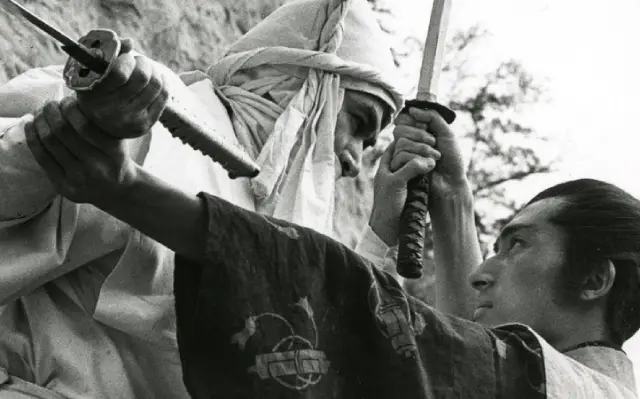
Samurai Spy (Ibun Sarutobi Sasuke), also known as Spy Hunter, is a 1965 film directed by Masahiro Shinoda, adapted from a novel by Koji Nakada. The film follows the legendary ninja Sasuke Sarutobi as he hunts the elusive spy Nojiri, while a shadowy figure named Sakon leads a group of men with their own designs on Nojiri. As the pursuit unfolds, the lines between allies and enemies blur, leaving everyone unsure of each other's true allegiance. Created during the height of the Cold War, the movie reflects the complexities and shifting loyalties of spies caught in the power struggles of their era.
-
Samurai III: Duel at Ganryu Island
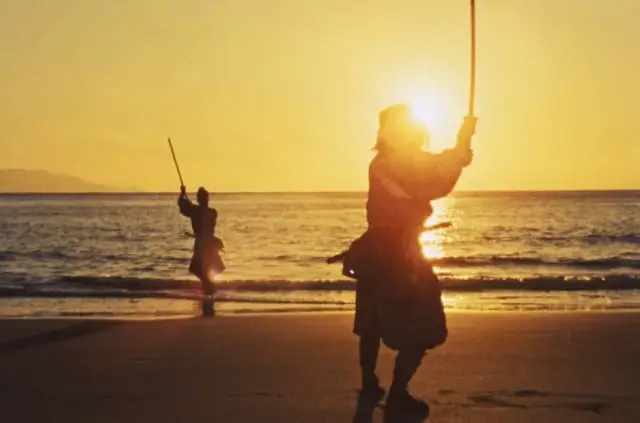
Samurai III: Duel at Ganryu Island (Japanese: Hepburn: Miyamoto Musashi Kanketsuhen: Ketto Ganryūjima) is a 1956 Japanese film directed by Hiroshi Inagaki and starring Toshiro Mifune. Filmed in Eastmancolor, it serves as the concluding chapter of Inagaki's Samurai Trilogy.
-
Samurai Marathon
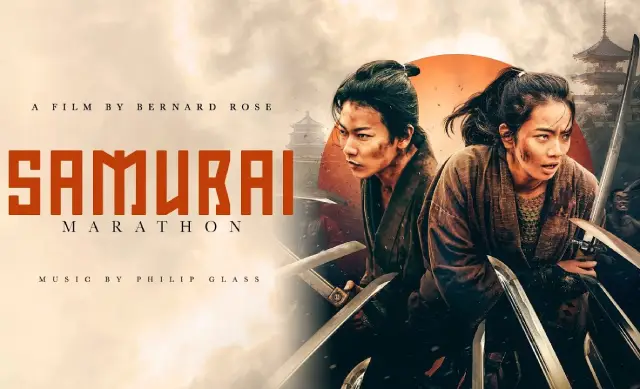
The producing team behind Takashi Miike's "13 Assassins," Jeremy Thomas and Toshiaki Nakazawa, reunite for another visually striking and action-packed samurai film. Based on a novel by Akihiro Dobashi, this film may not reach the same heights of relentless carnage or critical acclaim as its predecessor, but it still offers an exciting and occasionally humorous addition to the samurai genre, likely to resonate with festival audiences. This story of a literal running battle between rival samurai factions could see moderate success in theaters, though it may require more marketing effort without the ultra-violent appeal that made "13 Assassins" memorable.
-
Samurai II: Duel at Ichijoji Temple (1955)
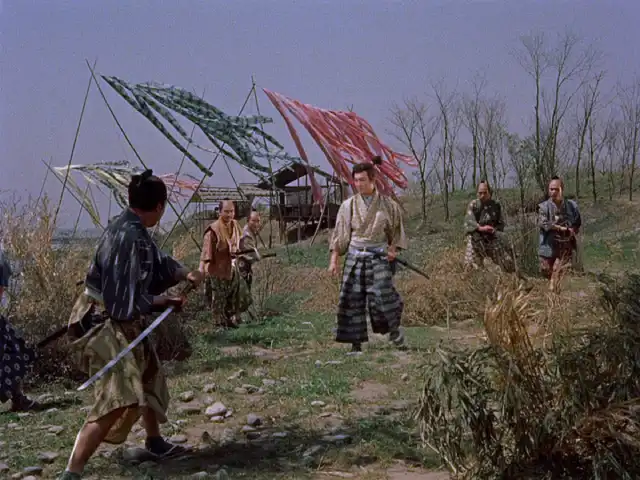
Duel at Ichijoji Temple (Hepburn: Zoku Miyamoto Musashi: Ichijōji no Kettō) is a 1955 Japanese film directed by Hiroshi Inagaki and starring Toshiro Mifune. Filmed in Eastmancolor, it is the second installment in Inagaki's Samurai Trilogy.
-
The Samurai I Loved (Semishigure)
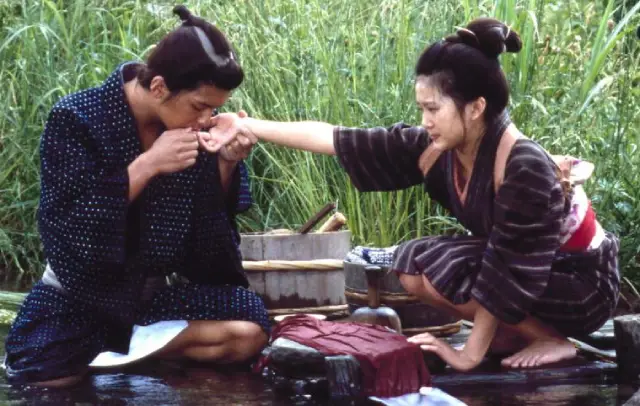
The costumes, settings, and script of The Samurai I Loved immediately transport samurai film enthusiasts back to the golden era of classic black-and-white samurai masterpieces.

